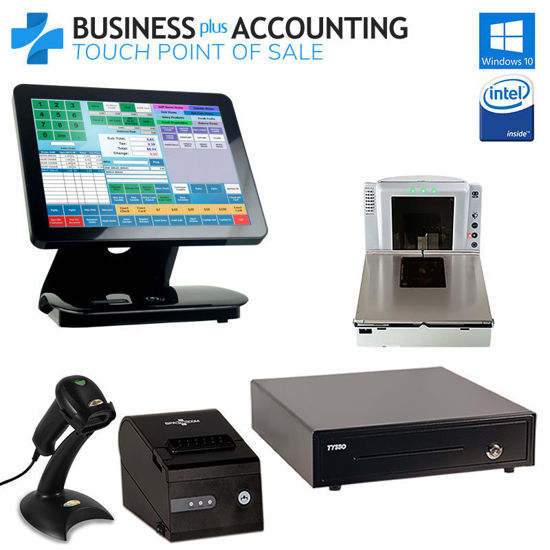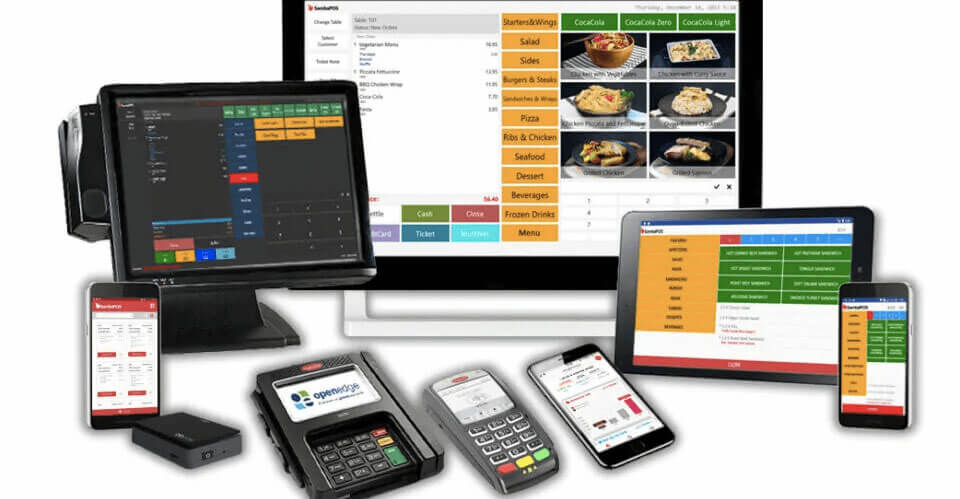Just How POS System Works: A Comprehensive Guide for Entrepreneur
Comprehending the Parts of a POS System

Just How Sales Deals Are Refined
When a client makes a decision to buy, the sales transaction launches a series of systematic steps within the POS system. First, the cashier inputs the products being bought, which are checked via a barcode viewers or by hand gone into. This activity retrieves product details, consisting of prices and appropriate taxes, from the system's database.Next, the consumer is provided with the overall amount due. The POS system after that processes the settlement, whether via cash, bank card, or mobile repayment methods (Restaurant POS Software). For digital repayments, the POS securely interacts with settlement processors to accredit and verify the transaction.Once the payment is verified, the system creates an invoice, which can be published or sent electronically. This invoice functions as receipt for the client. Finally, the deal information is videotaped in the system, making sure precise sales records and economic tracking for business
Stock Administration and Monitoring

Reliable inventory monitoring and monitoring are necessary parts of a POS system, as they assure that organizations keep excellent supply levels and lessen discrepancies. A durable POS system allows for real-time supply updates, showing returns and sales immediately. This makes it possible for company owner to monitor stock levels precisely, ensuring that prominent products are readily available while preventing overstocking of much less prominent products.Additionally, advanced POS systems supply attributes such as computerized stock signals and reorder tips, simplifying the procurement procedure. Barcoding and RFID innovation improve precision in tracking supply activity, lowering human error. Extensive coverage devices provide understandings right into supply turn over prices, assisting organizations make informed choices concerning purchasing and item offerings. Inevitably, efficient stock monitoring with a POS system not just improves functional effectiveness however additionally boosts customer complete satisfaction by making certain item availability.
Evaluating Customer Data and Insights
Customer data analysis functions as a powerful device for businesses utilizing a POS system (Restaurant POS Software). By checking out and accumulating transaction data, organizations can discover beneficial insights regarding customer behavior and preferences. This evaluation allows them to identify buying patterns, peak buying times, and preferred items, therefore notifying inventory decisions and marketing strategies.Additionally, organizations can section their consumer base, allowing for customized advertising efforts that accommodate details demographics or acquiring routines. Recognizing customer commitment patterns likewise helps in creating targeted incentives and promos programs.The data amassed from a POS system can additionally disclose understandings into consumer feedback, making it possible for organizations to make enlightened decisions relating to item offerings and here solution renovations. Ultimately, leveraging client data effectively can boost the general buying experience, foster client complete satisfaction, and drive income development
Advantages of Executing a POS System

Frequently Asked Inquiries
What Kinds Of Organizations Can Gain From a POS System?
Different services profit from a POS system, consisting of stores, dining establishments, salons, and e-commerce systems. These systems simplify deals, inventory management, and consumer information, enhancing operational performance and improving consumer experience throughout read more varied sectors.
Just how Much Does a POS System Generally Cost?
The price of a POS system normally varies from a few hundred to a number of thousand bucks, depending on features, equipment, and software. Businesses need to think about recurring costs for upkeep, purchase, and assistance processing when budgeting.
Can I Integrate a POS System With Existing Software?
Incorporating a POS system with existing software program is typically possible. Lots of systems use APIs or integrated compatibility attributes, allowing businesses to enhance operations and boost functionality by connecting numerous software applications effectively.
What Training Is Required for Personnel to Use a POS System?
Training for team to use a POS system usually consists of understanding software functionalities, processing deals, handling supply, and managing customer communications. Practical demos and hands-on practice improve effectiveness and self-confidence in operation the system effectively.
What Takes place if the Net Decreases While Making Use Of a POS System?
If the web drops throughout POS system usage, deals may be disrupted. Several systems supply offline capabilities, allowing basic operations to continue, yet complete functionality, including real-time inventory updates, will be limited. A Factor of Sale (POS) system is composed of a number of crucial components that work with each other to handle and help with purchases company procedures. Effective stock management and monitoring are crucial parts of a POS system, as they ensure that services keep optimal supply levels and lessen disparities. Client information evaluation offers as an effective device for services utilizing a POS system. Recognizing customer commitment patterns additionally helps in creating targeted rewards and promotions programs.The information amassed from a POS system can likewise disclose insights right into customer feedback, making it possible for companies to make educated decisions concerning product offerings and solution enhancements. Carrying out a POS system supplies countless advantages that can considerably boost business click here operations.